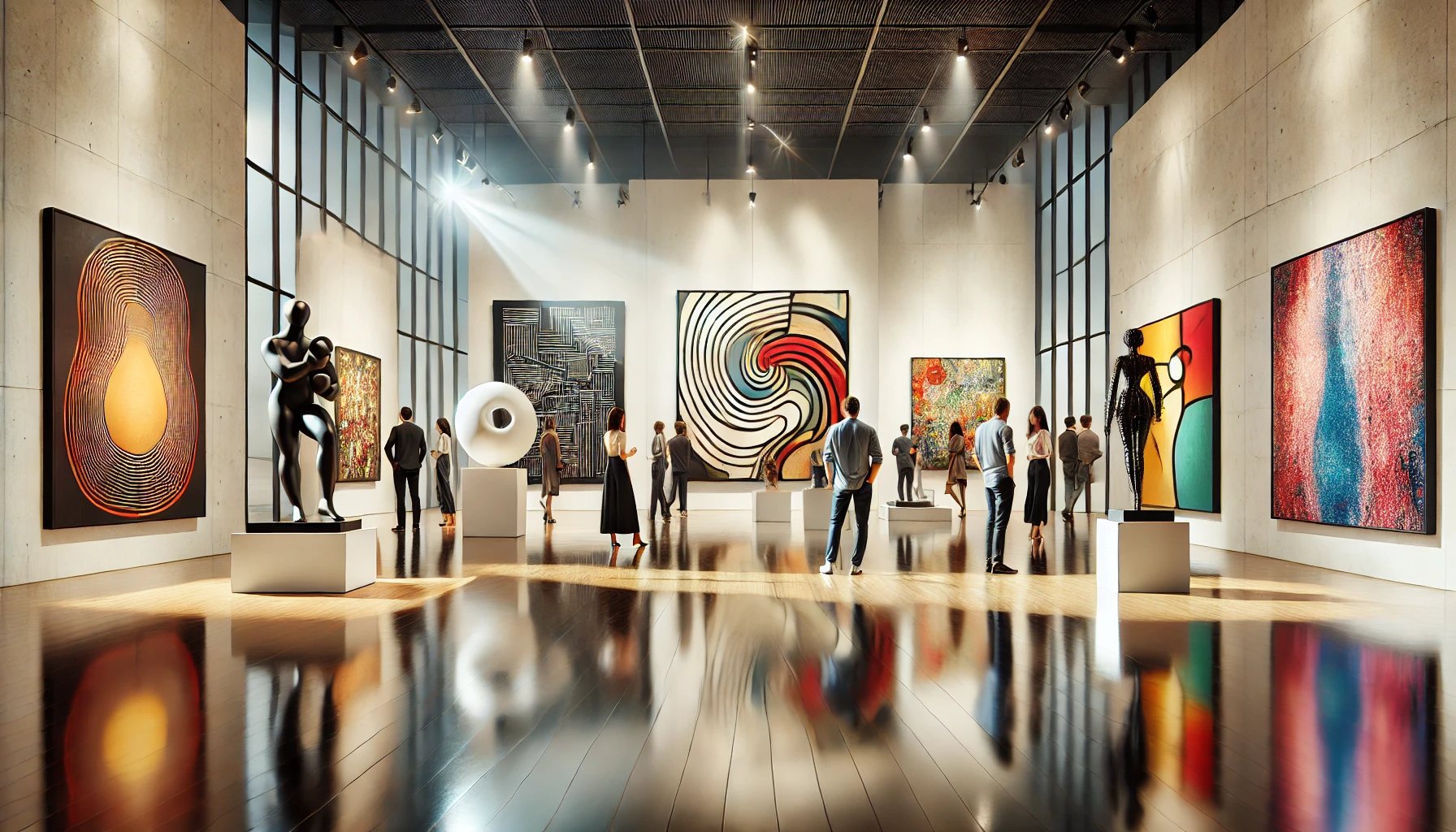Artificial intelligence (AI) is redefining how we create, experience, and appreciate art. This amazing technology can generate stunning visual works and even assist curators in putting together jaw-dropping exhibits. Although it’s only been around for a few years, AI is making its mark on the art industry. Let’s take a look at some ways this technology is reshaping the art world and impacting the way people think about artistic expression.
1. AI-Generated Art: The New Creative Partner
AI-powered algorithms like DALL·E and MidJourney are transforming how art is made. Using these tools, you can create pieces of art based on text prompts. This really opens up a whole new world of possibilities. Anything you can think of, you can create. Additionally, some artists have started collaborating with AI as a “creative partner” of sorts. Doing this allows them to push boundaries and potentially experiment with styles they haven’t previously considered.
In November, an AI-powered painting of Alan Turing sold for nearly $1.1 million. The painting, which was auctioned off in Sotheby’s digital art sale, was only expected to sell for $120,000 to $180,000. This isn’t the first time AI art has sold for an eyebrow-raising sum of money either. In 2018, Christie’s sold a painting made by an algorithm for $432,500. Seeing these pieces sell goes to show you that AI art is no longer a novelty but it is being seen as a legitimate form of artistic expression.
2. Revolutionizing Art Restoration
Art restoration is another part of the industry being impacted by artificial intelligence. Algorithms can analyze damaged or faded artwork and fill in the gaps, so to speak. This helps you figure out how the piece may have looked originally. Not only is this process faster than traditional restoration techniques, but it is also more accurate. AI is able to detect details that may not be visible to the human eye.
Twelve organizations in the European Union are behind the PERCEIVE project, which aims to use this technology to preserve and reconstruct artwork. They hope to put together an AI tool kit that will allow individuals in the art world to digitally reconstruct the original colors and aspects of various pieces.
3. Curating Exhibitions with Precision
Curators are turning to AI to organize and design art exhibitions. AI analyzes data on visitor behavior, preferences, and trends to curate collections that resonate with audiences. Artificial intelligence can help museums predict which pieces will attract the most attention. This allows them to optimize the layout and market the event accordingly.

The technology can even put together personalized recommendations, making exhibitions more engaging and interactive. Smart galleries can also give curators an all-new perspective, allowing them to discover hidden gems in the art world through technology. Overall, AI-driven curation ensures that exhibits appeal to diverse demographics, enhancing visitor satisfaction. It also allows smaller galleries to compete by offering data-driven experiences.
4. Breaking Barriers with AI-Enhanced Accessibility
One great thing about AI becoming incorporated in the art world is that it is breaking down barriers for individuals with disabilities. For people with visual impairments, AI-powered apps can describe different pieces of art through detailed audio. Deaf individuals can learn more about artwork in an exhibit with AI-generated sign language interpreters. This can greatly enhance their overall experience at a museum or art exhibit.
Beyond that, AI allows more people around the world to understand descriptions of the pieces by translating everything into multiple languages with ease. These advancements are breaking down barriers and democratizing access to art.
5. Transforming Digital Art Sales
The rise of NFTs (non-fungible tokens) has been fueled by AI technology. AI is used to authenticate digital artworks, ensuring their uniqueness and value. Platforms like OpenSea and Rarible rely on AI algorithms to verify NFT transactions and prevent fraud. AI-driven marketplaces make it easier for digital artists to reach a global audience and monetize their work. The combination of AI and blockchain technology is reshaping the way art is bought and sold. Collectors now have new ways to invest in digital assets with confidence.
The New Renaissance
Artificial intelligence is sparking somewhat of a new renaissance in the art world. While it has been controversial at times, AI is blending technology with creativity in some amazing ways. It isn’t replacing the artist by any means. Instead, it has become a tool and a collaborator in the space. As this technology continues to evolve, it will open new doors for artists, curators, and collectors.
Read More
- Hello Prenup Review: A Cost Effective Alternative to An Attorney For Your Prenup
- Investing in Art and Antiques for Fun and Profit
Read the full article here














